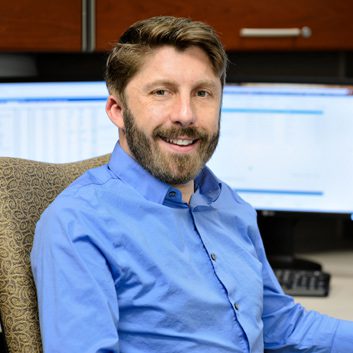MedRisk’s ISAB Member Paul Beattie shares how virtual visits and other telehealth capabilities are increasing access to care for patients – including deployed military personnel.
“Force readiness”: it may not be a term that’s often used in civilian life, but it’s certainly a concern shared by employers and the military alike.
“You want to keep your operations in top form. You don’t want to remove people from their jobs unless their health is truly at risk,” said Paul Beattie, PT, PhD, OCS, FAPTA, MedRisk International Scientific Advisory Board (ISAB) Member and faculty in USC’s Doctoral Program in Physical Therapy.
For nearly a decade, Beattie has helped train army, air force and naval chaplains at nearby Fort Jackson to support wounded, injured and emotionally distraught soldiers in the field. The goal: to help soldiers get the care they need while minimizing the need for medical evacuation.
Today, Beattie says this objective is being further bolstered by advances in the military’s telehealth capabilities.
In civilian life, it is not uncommon for people to have primary care physicians who know them well and have even cared for them for years. And when an unexpected issue arises, a referral to a nearby specialist helps connect the patient with the expertise required. According to Beattie, military field sites often rely on just a handful of medical personnel, and physically linking up with healthcare providers, especially for specialty care, has been historically challenging – until now.
The military has dramatically increased access to care through the implementation of telehealth capabilities. Perhaps the most critical telehealth development for the military is the introduction of virtual visits that can now be performed through the military health system website.
Similar to MedRisk’s telerehab program, the military’s Virtual Video Visits, or “V3” appointments, are conducted via a secure video teleconference. This combination of live audio and visual allows medics and physicians who are deployed with soldiers to serve a wider range of patients, without the logistics and costs of in-person visits.
These virtual visits have proven particularly useful in specialty cases that require services like genetic testing, dermatology, nutritional counseling and mental health services, which have been an increasing focus of the military. Similar to injured worker rehabilitation, telehealth can also be a valuable tool in getting back deployed soldiers back on their feet following musculoskeletal injury. Physical therapists are point-of-care in the military, but should a second opinion or specialty care be required, a diagnostic quality image can be captured and sent to a specialist at another military treatment facility (MTF) for interpretation. This often facilitates a faster, complete diagnosis, and the report can be stored and accessed by an authorized user from anywhere in the world.
Beattie cites a groundswell of support to get telehealth functionality implemented in the military. The result has been preventive, acute and life-saving treatment delivered in a more expeditious manner. As for user experience, surveys conducted by the US Army Public Health Command documented high satisfaction among providers, patients and commanders.
With the positive outcomes demonstrated thus far, Beattie expects telehealth will become a pillar of care for the military – and healthcare at large, including workers’ compensation.
“We all have a smartphone on us. The uniform’s even got a pocket for it now,” Beattie said. “I’d say telehealth is here to stay.”
About Paul F. Beattie, PT, PhD, OCS, FAPTA
Paul Beattie is a member of MedRisk’s International Scientific Advisory Board and clinical associate professor at the University of South Carolina Department of Physical Therapy, School of Public Health. A nationally renowned and expert psychometrician specializing in examining, analyzing, and validating patient care questionnaires Dr. Beattie has been instrumental in developing MedRisk’s patient satisfaction instruments as well as consulting on MedRisk’s development of its telerehab program for injured workers.
Dr. Beattie has 30 manuscripts published in peer reviewed journals and more than 100 professional presentations.



